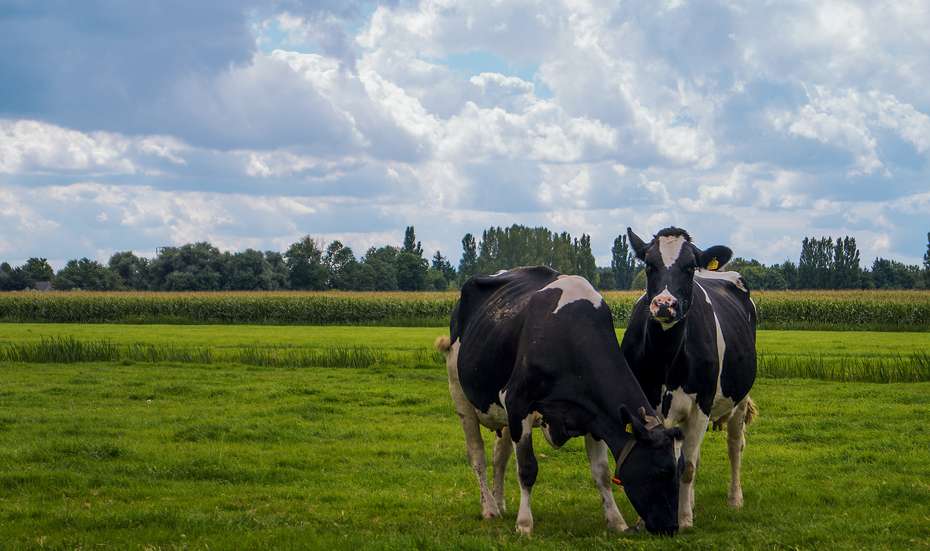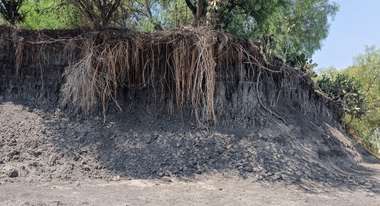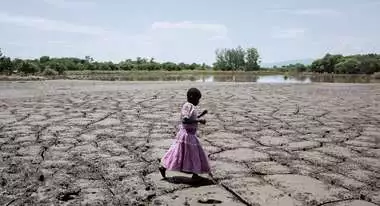Carbon Farming - a New Buzzword for Climate-Friendly Agriculture?
Carbon farming aims to store carbon from the atmosphere in agricultural soils. But is it the task of agriculture to "capture" greenhouse gases produced by industry? Other approaches are better suited to saving the climate.
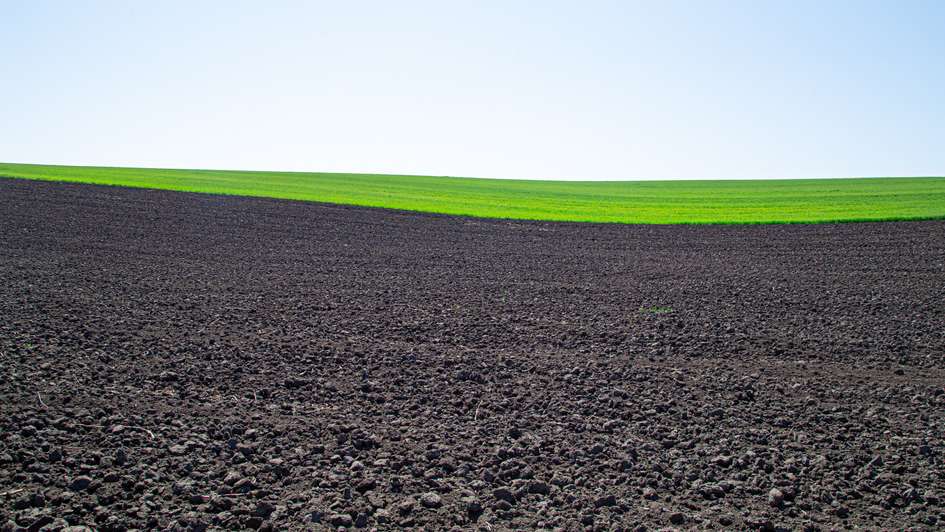
During the UN Climate Change Conference in Paris in 2015, a global program to build up humus was launched, the “4 per 1000 Initiative”. It aims for an annual increase in global soil carbon stocks of 4‰. The claim is that this could offset anthropogenic CO2 emissions to a large extent. "Carbon farming" is the new buzzword that is currently being hotly debated globally and throughout the EU. CO2 certificates for agriculture are meant to support climate protection. However, while in theory this appears to be an amazingly simple solution, it has numerous pitfalls and the debate unfortunately often leads to erroneous conclusions and counterproductive political "solutions".
Doing the sums correctly
Let’s start with a few basic facts: The lion's share of greenhouse gases in the atmosphere is caused by the exploitation of fossil carbon deposits in solid or gaseous form (energy for industry, transportation, heating, cooling, etc.). According to the IPCC report on land use and the World Agriculture Report, agriculture is both a driver of climate change and its dramatic victim (1). And depending on the type of agricultural system, it also has significant mitigation potential.
A rarely discussed fact is that the largest contribution of agriculture to climate change is the production and use of synthetic nitrogen fertilizers (2). Haber-Bosch synthesis for the production of ammonia from atmospheric nitrogen requires around 1.2 percent of global energy (3). For many agricultural crops as well as fruit and vegetables, more than a third of energy consumed by "modern" agriculture is a result of the production of agrochemicals (fertilizers and pesticides) (4).
However, these emissions are not included in most calculations and models, as they are not attributed to agriculture but to the industrial sector. If the use of mineral fertilizers were to be reduced and concurrently nitrogen supply from the air increased by means of legumes, agricultural greenhouse gases would already be reduced by more than half and at the same time, humus would be increased. (5)
High livestock numbers are another important source of emissions. However, we are not talking primarily about the methane emissions of cattle but about the energy- and emission-intensive global cultivation of feed for industrial animal production. This is a highly inefficient form of protein production that exceeds any rational measure of utilizing agricultural land. These energy-intensive external inputs represent a lever for controlling greenhouse gases of an order of magnitude well beyond the scale possible as a result of the humus build-up in agricultural crop management usually proposed in discussions on carbon farming.
Leaving it inside vs. burying it: a big difference
Soils can act as carbon sources (CO2 emissions) and/or as carbon sinks (CO2 storage). At present, the world's soils store around 1,460 billion tons of organic carbon, more than double the amount of carbon in the atmosphere (6). BUT: The largest portion of carbon in soils (25 percent) is stored in permafrost regions which cover a quarter of the land area (Arctic, Antarctica, Alps) (7). Here, agriculture plays no role at all. Apart from soils in permafrost regions, moors and grasslands contain the largest proportion of the carbon stored in the soil. Protecting these biomes and preventing the escape of soil carbon must therefore have top priority when dealing with the issue of "carbon in soils". Grassland is the largest biome on our planet next to forest and covers around 40 percent of the vegetated land area (8).
However, ruminants are needed to protect grassland. The more regularly it is grazed, the more humus is built up. Against this background, ruminants should be assessed not only on their methane emissions, since they are active protectors of the climate while at pasture (9).
Changes in land use from systems that tend to store CO2 to systems that tend to release CO2 are extremely relevant to climate change. This takes place above all when mixed forests are cleared or grasslands plowed up – as is currently the case in Asia and Latin America with the deforestation of rain- and dry forests and savannahs (grasslands). Compared to this, the potential for climate protection of CO2 sequestration through humus formation in crop farming is very low.
Carbon into soil at any cost?
Agricultural soils, provided they are intact, contribute substantially to maintaining our ecosystems. To do this, they need a high humus content and biological activity. However, it cannot be the task of agriculture to "capture" greenhouse gases caused by industrial production and store them permanently in the soil.
In contrast to peat, arable soils are not suitable as a site for stable carbon sequestration since biological activity not only builds up humus but also involves transformation and decomposition. Beneficial soil properties and healthy plant nutrition as well as pores to support water storage and purification can only be produced by a high level of biological activity. This process always releases CO2. Increased carbon stability in soil leads to decreased biological activity (10) and the formation of fewer pores to support climate-adapted water management.
Biochar is not effective
When the focus lies on the stability of carbon introduced into the soil, measures that have a detrimental effect on soils are also suggested, such as the introduction of biochar. This is usually mixed into compost applied to soil. Biochar is said to be particularly stable, although this has not yet been confirmed in field trials. To deliver around one percent of the greenhouse gas reduction targeted for Germany by 2030, the entire biomass available in Germany would have to be turned into biochar (11). This is totally unrealistic.
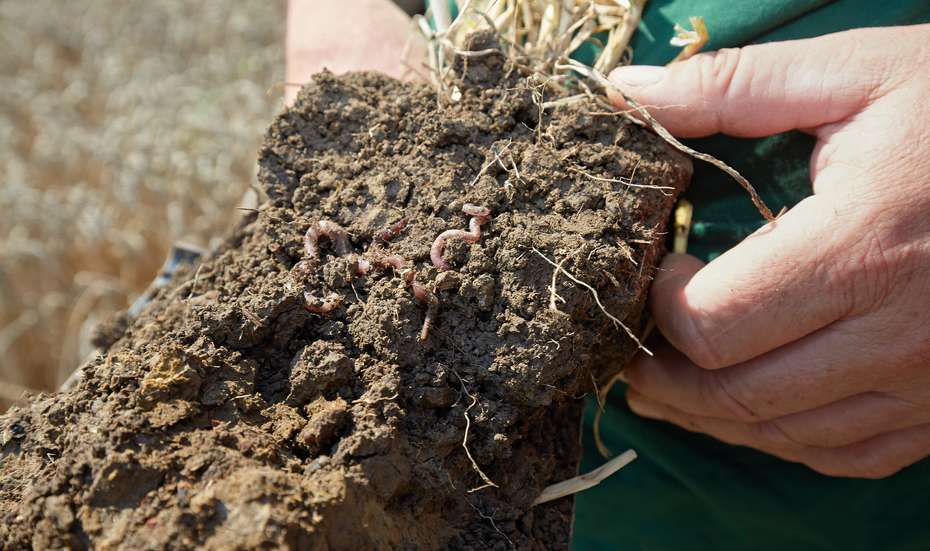
For both soils and climate protection, it is far more effective to convert surplus and waste materials into high grade compost than to turn them into biochar by so-called pyrolysis. In addition, there is a constant danger of pollution since the process inevitably produces carcinogenic polycyclic aromatic hydrocarbons (PAHs) – largely independently of the source materials (12). In contrast to the promises made in promotional material, this high-tech substrate has nothing chemically in common with fertile black Terra Preta in Brazil (13). One should expressly warn against confusing such techniques of geoengineering with "nature-based solutions" called for by the Food and Agriculture Organization of the United Nations (FAO) and the UN's Sustainable Development Goals (SDGs) (14).
The global "Biochar" market was valued at 184.90 million dollars in 2022 and is expected to grow from 204.69 million in 2023 to 450.58 million dollars by 2030 (15). Companies involved include Diacarbon Energy Agri-Tech Producers, Biochar Now, Carbon Gold, Kina, The Biochar Company, Swiss Biochar GmbH, ElementC6, BioChar Products, Black Carbon, Cool Planet and Carbon Terra. It’s been a long time since only surplus material was used. Nowadays, wood (not surplus), maize and wheat are also being used as raw materials. However, production is very complex and expensive, which makes "biochar" unattractive for potential customers – especially farmers. Companies active in this market would therefore welcome subsidies for carbon farming. So the fierce lobbying for carbon farming in Brussels and in member states comes as no surprise.
Sciene is critical of CO2 certificates
A study recently published in the Journal of Environmental Management confirms several other studies that have found CO2 compensation certificates based on an increase in the amount of organic carbon in agricultural soils (humus certificates) to be an unsuitable instrument for climate protection (15). In particular, the stability of storage and its monitoring are not sufficiently guaranteed, according to the study. According to the authors, it is unlikely that in the long term the certificates will actually assure compensation of emissions for which they are traded on the market. The funds allocated to this could be used more effectively elsewhere, for example in preventing emissions.
According to the study, higher carbon content has advantages for farmers, including healthier soil and, above all, better water storage capacity and thus resistance to loss of yields due to drought. It cautions, however, that this can only be achieved with high-quality humus – which cannot be achieved by indiscriminately dumping carbon into the soil. Changes in agricultural management would be required, which cause extra costs: for example, for catch crop seeds and for additional work cycles, or by diversifying crop rotation using less profitable crops. Building hedges and copses also requires investment. And finally, the loss of land previously used to plant crops has its costs.
Agroecology creates synergies
While climate protection is only possible to a limited extent through agricultural measures, practices such as agroecology offer great potential for climate adaptation. Agroecology is very similar to certified organic farming. However, many small farmers operating agroecologically are not certified, as this is often too expensive. Age-old techniques of balanced crop rotation with diversified deep rooting plants have been optimized in organic farming; permaculture, agroforestry, the recycling of organic matter in the form of solid manure, crop residues and quality compost – all of these are clearly superior methods of climate-adapted cultivation when compared to technological tinkering (16).
Conclusion
Humus build-up is important for soil fertility, erosion control, groundwater accumulation and flood protection – and it makes agriculture climate-resilient. However, it is not suitable as a model for "carbon farming" with CO2 certificates. Compensation should be paid for best-practice measures to build up humus in order to make soils more resilient to climate change. This focus is urgently needed in agricultural cultivation. Protecting moorland and grassland, avoiding the use of mineral fertilizers and reducing animal numbers are more effective for climate protection.

(1) IPCC (2000) Landuse, Landuse Change and Forestry. International Assessment of Agricultural Knowledge, Science and Technology for Development (IAASTD) (2009): Landwirtschaft am Scheideweg. Washington.
(2) Sutton, M., Howard, C. et al. (Hrsg.) (2011): The European Nitrogen Assessment: Sources, Effects and Policy Perspectives. Cambridge University Press.
(3) Kongshaug, G. (1998): Energy Consumption and Greenhouse Gas Emissions in Fertilizer Production. IFA Technical Conference, Marrakesch, Marokko, 28. September bis 1. Oktober 1998.
(4) Clausing, P. (2014): Energieschleuder Agrarindustrie. In: Ökologie & Landbau 172
(5) Köpke, U.; Nemecek, Th. (2010): Ecological services of faba bean. In: Field Crops Research 115.
(6) Scharlemann, J.P.W., et al. (2014): Global soil carbon: understanding and managing the largest terrestrial carbon pool. Carbon Management, 5(1).
(7) Horwath, J. (2005). Warming could free far more carbon from high arctic soil than earlier thought. University of Washington
(8) Hewins, Daniel B.; Lyseng, Marc P. et al. (2018): Grazing and climate effects on soil organic carbon concentration and particle-size association in northern grasslands. Scientific Reports 8:1336. DOI:10.1038/s41598-018-19785-1.
(9) Beste, A. & Idel, A. (2019). The belief in technology and big data. The myth of climate smart agriculture - why less bad isn’t good. https://www.gesunde-erde.net/media/myth_of_climate_smart_agriculture_final.pdf
(10) Beste, A., Lorentz, N. (2022): Ecosystem Soil – Bringing nature-based solutions on climate change and biodiversity conservation down to earth. (Ed.): giz/BMUV. https://www.gesunde-erde.net/media/giz_eba_ecosystem-soil_final.pdf
(11) Gurwick, NP et al. (2013). Eine systematische Überprüfung der Biokohle-Forschung mit Schwerpunkt auf ihrer Stabilität in situ und ihrem Versprechen als Klimaschutzstrategie.
Teichmann, I., 2014. Klimaschutz durch Biokohle in der deutschen Landwirtschaft: Potenziale und Kosten. DIW Wochenbericht Nr. 1+2.2014, 3-14.
(12) https://www.sciencedirect.com/science/article/abs/pii/S0048969719309313
(13) https://humictrade.org/wp-content/uploads/2022/03/Biochar-Report-HPTA-Science-Committee.pdf
(14) https://www.sciencedirect.com/science/article/abs/pii/S0304389421015764?via%3Dihub
(15) https://www.fortunebusinessinsights.com/industry-reports/biochar-market-100750
(16) Carbon farming: Are soil carbon certificates a suitable tool for climate change mitigation? https://www.sciencedirect.com/science/article/pii/S0301479722027153orgprints.org/id/eprint/37953/1/Wiesmeier-etal-2020-BonaRes-Series-Vol1-p1-24.pdf
(17) Beste, A. (2022): GREENWASHING & HIGH TECH – Faking it: (un-)sustainable solutions for agriculture.
https://www.gesunde-erde.net/media/fakesustainability_end_english_1.pdf
